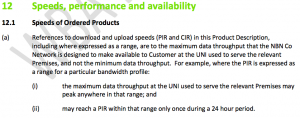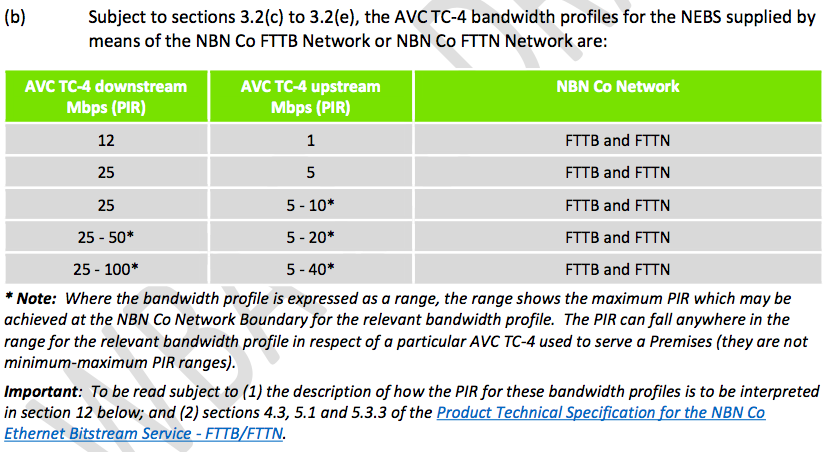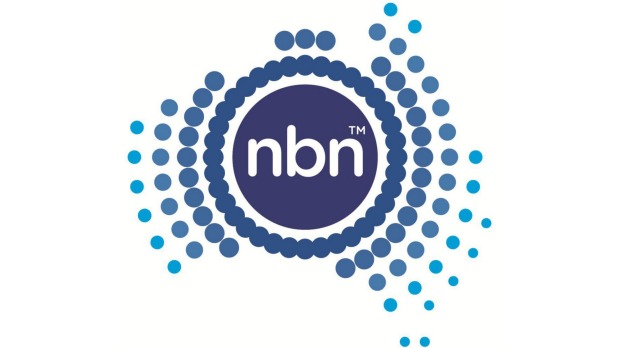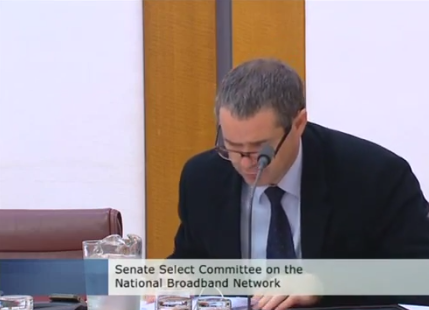Conflicting definitions and redundant tautology leads to confusion. Co-existence period Peak Information Rates are a “guarantee to RSPs… not a cap on speeds”.
It’s been a good four days since I published my piece about how the latest draft Wholesale Broadband Agreement says that Fibre to the Node speeds will be limited to 12/1 Mbps during the transition period. To put it frankly, I was hoping it was wrong because technically:
- Use of Downstream Power Back-off (DPBO) will reduce interference
- Capping the speed will have no significant effect (if any) on reducing interference
- Would be unnecessarily limiting speeds of end users who are very close to the node
The good news is it a spokesperson for NBN Co (probably not “officially”) has said the original post I wrote is wrong. That gives a glimmer of hope that NBN Co will not be limiting speeds to 12/1 Mbps during the transition period. But given past experience with spokespeople at NBN Co denying things that actually exist, I’d still take it with a grain of salt.
Assuming that the spokesperson is correct though:
How did it come to this?
Well, in short: incorrect documentation.
Part 1: What’s a Peak Information Rate?
Noting it is a draft document, it seems evident that the person who wrote the section about the co-existence period didn’t know what the definition of PIR (Peak Information Rate) is.
Firstly, we have the section about co-existence period (Page 9 of the NEBS Product Description, for those playing along at home) that clearly says: “during the Co-existence Period, the PIR (and the lower end of any PIR range) at the UNI for each AVC TC-4 bandwidth profile will be… [12/1 in the NBN Co FTTN Network]”:

So, it seems pretty clear that the Peak Information Rate and the lower end of any Peak Information Rate range will be 12/1 Mbps on Fibre to the Node… right?
Your natural instinct would be to lookup what the Peak Information Rate is… and to my delight, there’s a whole section on it! (my bold)

References to download and upload speeds (PIR and CIR) in this Product Description, including where expressed as a range, are to the maximum data throughput that the NBN Co Network is designed to make available to Customer at the UNI used to serve the relevant Premises, and not the minimum data throughput.
Now, given “during the Co-existence Period, the PIR (and the lower end of any PIR range) at the UNI for each AVC TC-4 bandwidth profile will be… [12/1 in the NBN Co FTTN Network]”… it seems pretty clear that the 12/1 mbps is a “maximum data throughput that the NBN Co Network is designed to make available… and not the maximum data throughput” (to quote the document word-for-word). And that makes it effectively a cap and a limit… right?
“Wrong.”
“Wrong? What do you mean wrong?”
@jxeeno @gmclwill @DylanWalkden Wrong. It It guarantees speeds of – but doesn’t limit them to – 12/1 during the transition period
— Andrew Sholl (@andrewsholl) June 2, 2015
@jxeeno That’s our guarantee to RSPs. It is not a cap on speeds — Andrew Sholl (@andrewsholl) June 2, 2015
So, there you go! If we’re trusting what NBN is saying: Peak Information Rate is now both “not the maximum data throughput” and also is the “minimum guaranteed speed” at the same time. #notconfusing
Part 2: The Fibre to the Basement scenario
The company also included a row for the Fibre to the Basement conditions during the co-existence period. They state that the Peak Information Rate will be 25/5 except for 12/1 which obviously will have 12/1 mbps.
But if the co-existence period doesn’t “limit” or “cap” the speeds, why is there a row for FTTB there in the first place? All speeds delivered over copper using the NBN Co FTTB network, by default, can only guarantee 25/5 mbps – as shown in the table of speeds below:

So:
- if during the co-existence period, 25/5 is going to be the guaranteed rate, having the FTTB row in the first table is redundant tautology and means nothing.
- therefore, it would imply that during the co-existence period, the speed will not exceeded 25/5 Mbps, hence having the requirement to say so in the WBA.
“No.”
“No. What do you mean no?”
NBN Co must like redundant tautology.
How would I phrase it?
Like this:
during the Co-existence Period, the NBN Co FTTB Network will be unaffected. The following PIR (and PIR ranges) on the NBN Co FTTN Network will become:
| Original | Co-existence Period | ||
|---|---|---|---|
| AVC TC-4 downstream Mbps (PIR) | AVC TC-4 upstream Mbps | AVC TC-4 downstream Mbps (PIR) | AVC TC-4 upstream Mbps |
| 25 | 5 | 12-25 | 1-5 |
| 25 | 5-10 | 12-25 | 1-10 |
| 25-50 | 5-20 | 12-50 | 1-20 |
| 25-100 | 5-40 | 12-100 | 1-40 |
See? All fixed! No confusion at all.

